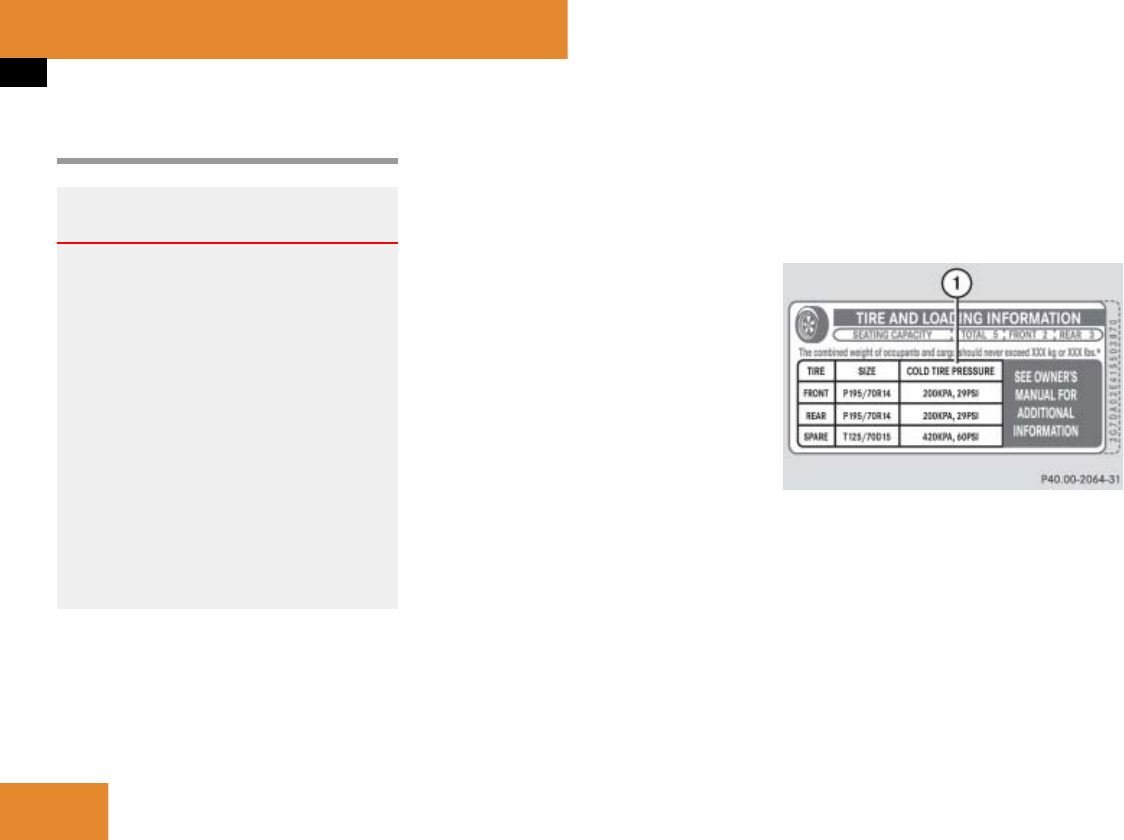
374
Operation
Tires and wheels
Recommended tire inflation pressure Your vehicle is equipped with the Tire and
Loading Information placard located on
the driver’s door B-pillar (
୴ page 369).
The tire inflation pressure should be
checked regularly and should only be ad-
justed on cold tires. The tires can be con-
sidered cold if the vehicle has been parked
for at least 3 hours or driven less than
1 mile (1.6 km).
Follow recommended cold tire inflation
pressures listed on placard.
Keeping the tires properly inflated
provides the best handling, tread life and
riding comfort.
In addition to the tire placard on the
driver’s door B-pillar, also consult the fuel
filler flap for any additional information
pertaining to special driving situations. For
more information, see “Important notes on
tire inflation pressure” (
୴ page 375).
1 Tire and Loading Information placard
with recommended cold tire inflation
pressures
The Tire and Loading Information placard
lists the recommended cold tire inflation
pressures for maximum loaded vehicle
weight. The tire inflation pressures listed
apply to the tires installed as original
equipment.
Warning! G
Follow recommended tire inflation
pressures.
Do not underinflate tires. Underinflated tires
wear excessively and/or unevenly,
adversely affect handling and fuel economy,
and are more likely to fail from being over-
heated.
Do not overinflate tires. Overinflated tires
can adversely affect handling and ride
comfort, wear unevenly, increase stopping
distance, and result in sudden deflation
(blowout) because they are more likely to
become punctured or damaged by road
debris, potholes etc.
i
Data shown on placard example are for
illustration purposes only. Tire data are specific
to each vehicle and may vary from data shown in
the illustration below. Refer to placard on vehicle
for actual data specific to your vehicle.


















